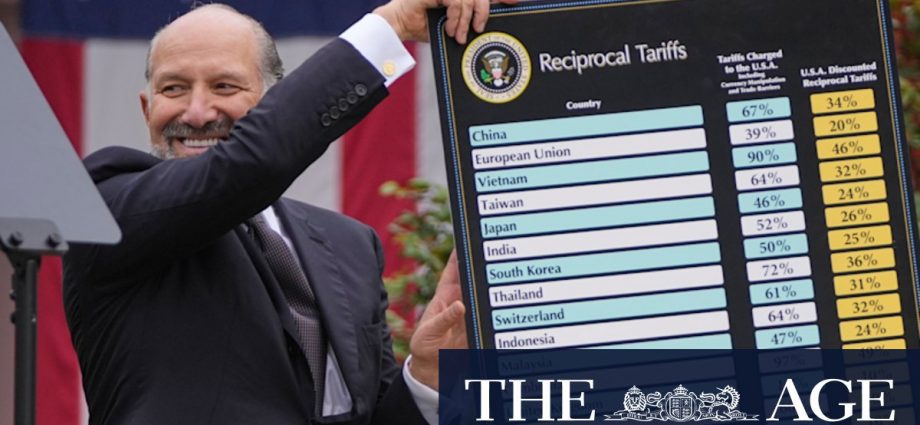US and global markets plunged the morning after Trump’s tariff announcement. The Dow Jones Industrial Average dropped 1679 points in its biggest wipeout since 2020, the S&P 500 sunk 4.8 per cent and the Nasdaq composite 6 per cent.
The White House dismissed the market reaction, with press secretary Karoline Leavitt saying the president was doubling down on a successful economic formula from his first term, and Wall Street investors should “trust in Trump”.
In a social media post, Trump likened the so-called “Liberation Day” tariffs to an invasive medical procedure, writing all in caps:
“The operation is over! The patient lived, and is healing. The prognosis is that the patient will be far stronger, bigger, better, and more resilient than ever before.”
During the announcement, Trump said he expected to field phone calls from world leaders trying to negotiate a deal on the tariffs. Albanese and Dutton both indicated they would seek to do a deal and pledged to travel to Washington as a priority if they won the election.
Loading
Lutnick, a billionaire friend of Trump’s from their finance days in New York, said in his series of interviews that while the president was open to deals, he wanted to see other countries act first.
“The president is not going to back off,” Lutnick told CNN. “But countries can fix their tariffs, their non-tariff trade barriers, which are much, much rougher … They are the monster that needs to be slayed.
“Then, and only then, will Donald Trump make a deal with each country – when they’ve really, really changed their ways.”
Lutnick said this did not mean a negotiation. “Negotiate is talking. No talking. Too late. These countries have abused us and exploited us, as he said yesterday. They need to change their ways, let’s see them change their ways. It’s going to be a long time, let’s see what they do. Not talking. Talking is nonsense.”
Loading
As this masthead reported, the tariffs announced by the Trump administration were not based on tariffs or other trade barriers levied by each country. They were calculated using a generic formula that divided the US trade deficit with each country by the country’s exports to the US.
Countries like Australia, with which the US has a trade surplus, received the lowest possible or “baseline” tariff of 10 per cent.




